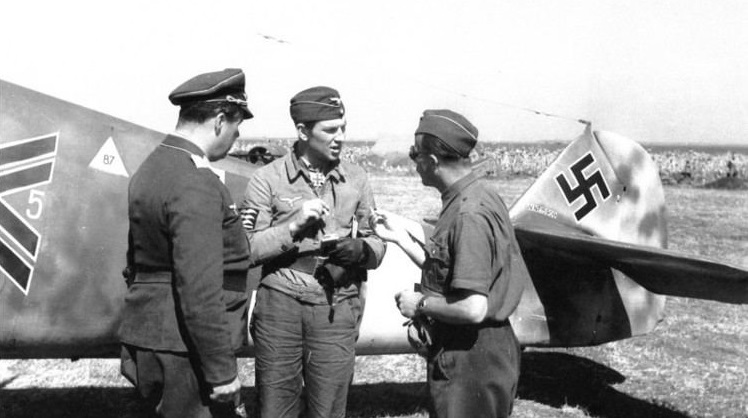Gerhard “Gerd” Barkhorn was the second most successful fighter ace of all time after Luftwaffe pilot Erich Hartmann. Other than Hartmann, Barkhorn is the only fighter ace to ever exceed 300 confirmed victories. Take a look below for 27 more weird and interesting facts about Gerhard Barkhorn.
1. Barkhorn joined the Luftwaffe in 1937 and completed his training in 1939.
2. Barkhorn flew his first combat missions in May 1940, during the Battle of France and then the Battle of Britain without shooting down any aircraft.
3. His first “victory” came in July 1941 and his total rose steadily against Soviet opposition.
4. In March 1944, he was awarded the third highest decoration in the Wehrmacht when he received the Knight’s Cross of the Iron Cross with Oak Leaves and Swords for 250 aerial victories.
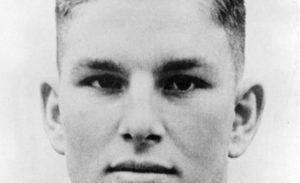
5. Despite being the second-highest scoring pilot in aviation history, Barkhorn was not awarded the Diamonds to his Knight’s Cross with Oak Leaves and Swords after achieving his 300th victory on January 5, 1945.
6. Barkhorn flew 1,104 combat sorties and was credited with 301 victories on the Eastern Front against the Soviet Red Air Force piloting the Messerschmitt Bf 109 and Focke-Wulf Fw 190D-9.
7. He flew with the famed JG 52 – 52nd Fighter Wing, alongside fellow aces Hartmann and Gunther Rall, and JG 2 – 2nd Fighter Wing.
8. Barkhorn surrendered to the Western Allies in May 1945, and was released later that year.
9. After the war, Barkhorn joined the German Air Force of the Bundeswehr, serving until 1976.
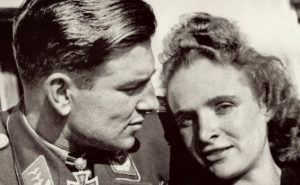
10. On January 6, 1983, Barkhorn was involved in a car crash with his wife Christl. She died instantly and Gerhard died tow days later on January 8, 1983.
11. Barkhorn was born on March 20, 1919, in Konigsberg in the Free State of Prussia of the Weimar Republic.
12. He was one of four children of Wilhelm, an urban design inspector, and his wife Therese.
13. Barkhorn had two brothers, Helmut and Dieter, and a sister, Meta.
14. Following four years of primary school, Barkhorn attended the Wilhelms-Gymnasium, a secondary school, where he graduated with his diploma.
15. After his compulsory Reich Labour Service, Barkhorn joined the military in Luftwaffe of the Nazi Germany in November 1937 as a Cadet.
16. He started his flight training in March 1938.
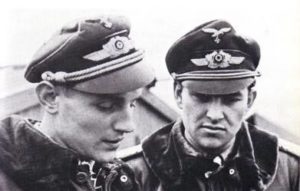
17. World War II in Europe began on September 1, 1939, when German forces invaded Poland and Barkhorn was selected for specialized fighter pilot training.
18. Upon completion of his training, he was commissioned as a Second Lieutenant and posted to the 3rd Squadron in JG2 – 2nd Fighter Wing.
19. He was flight trained by Franz Stigler, who would later become a Luftwaffe ace himself.
20. Barkhorn flew his first combat sorties over Belgium and France during the Battle of France and later over southern England during the Battle of Britain, flying the Messerschmitt Bf 109E.
21. After Barkhorn was released as a prisoner of war, he found work in the automobile industry.
22. Following the decision of the Cabinet of Germany to rearm the Federal Republic of Germany, Barkhorn joined the military service of the West German Air Force in 1956.
23. From April 1, 1957, to December 31, 1962, he commanded the JaBoG 31 – Fighter Bomber Wing 31.
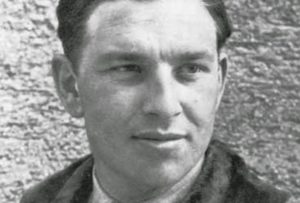
24. In 1964, he was posted to the staff of Air Force Test Command holding the rank of Colonel.
25. From October 1964 until November 1965, Colonel Barkhorn headed the six-man West German Air Force contingent of the Tripartite Kestrel Evaluation Squadron at Royal Air Force Station West Raynham, Norfolk, England.
26. Barkhorn was promoted to Brigadier General in 1969 and to Major General in 1973.
27. His last position was Chief of Staff of the Second Allied Tactical Air Force, a NATO military formation under Allied Air Forces Central Europe.

